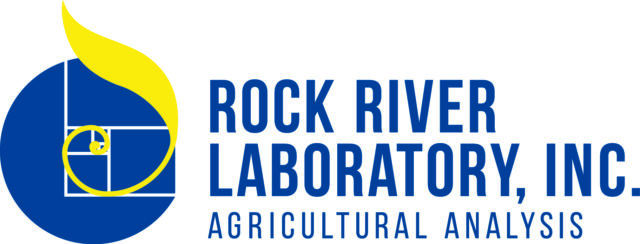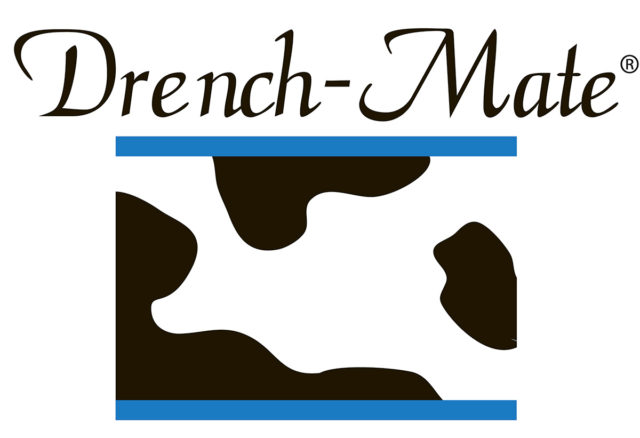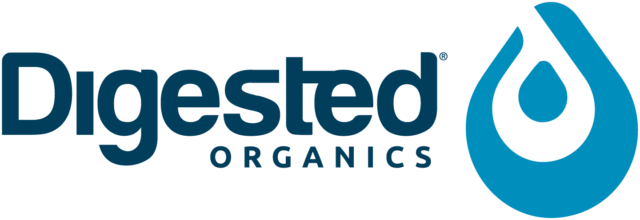This article was #19 of the Top 25 most well-read articles on www.progressivedairy.com in 2012. to jump to the article. It was published in the March 21, 2012 issue. Click here for the full list of the Top 25. Progressive Dairyman Editor Walt Cooley interviewed the then-new CEO of California Dairies, Inc., Andrei Mikhalevsky. The former Fonterra executive shared his views on both export and domestic opportunities for the U.S. dairy industry.
Q. What makes you most excited about 2013 and its prospects for the dairy industry?
2012 has been a year filled with challenges. The combination of low milk prices and high feed costs stressed dairy producers’ bottom line for the better part of the year. As 2013 approaches, milk prices have begun to recover and are expected to remain stable for the near term.
Looking ahead to 2013, there is potential for margins to continue to improve. In addition, the market dynamics in the mid-term to long-term for a vibrant and sustainable industry are still in place – worldwide demand for dairy remains strong and U.S. dairy products have been recognized as desirable, safe and high-quality.
On the legislative side, the New Year may potentially bring a new Farm Bill that could include significant regulatory changes in dairy. At CDI, we are excited about the year ahead as we continue in the quest to attain “preferred supplier” status in the global dairy industry.
—Andrei Mikhalevsky, CEO, California Dairies, Inc.
ARTICLE:
 CDI’s new CEO Andrei Mikhalevsky, a former Fonterra executive, started work Jan. 1. He talks with Progressive Dairyman Editor Walt Cooley about U.S. dairy export and domestic opportunities as well as what the U.S. could learn from his former employer.
CDI’s new CEO Andrei Mikhalevsky, a former Fonterra executive, started work Jan. 1. He talks with Progressive Dairyman Editor Walt Cooley about U.S. dairy export and domestic opportunities as well as what the U.S. could learn from his former employer.
Q. What’s most surprised you about working with the U.S. dairy industry in your first few months?
A. MIKHALEVSKY: What probably surprised me most about the U.S. dairy industry is the complexity of milk pricing. As you look at some of the reforms that have been suggested, real reform is needed in the industry in order to take advantage of domestic and world opportunities.
Q. And what things did you know about the U.S. industry but hadn’t experienced first-hand?
A. MIKHALEVSKY: The U.S. industry has such potential, but one of the things you find in the U.S. industry is that U.S. consumption of fluid milk is declining. People are eating their milk rather than drinking it.
There is a limit to the amount of growth you can get from domestic consumers. The places we need to look for growth are outside the U.S. There’s a massive opportunity for the U.S., if positioned correctly, to capture a share of the world market and be able to produce significant results for the U.S. dairy industry.
Q. I think producers will find most interesting your background in working with Fonterra. Could you explain what you did with them?
A. MIKHALEVSKY: My primary mission when I came to Fonterra was to help transition from selling commodities into the world market into getting a higher value for their milk and building a value-added business. So what Fonterra primarily did was look at the world market, identify what consumers and customers needed, couple that with innovation, research and technology, and try to develop a significant value-added business, which they did.
Fonterra focused in several areas: growing the food service business; growing the infant nutrition business; focusing on specialty ingredients; researching protein and its benefits; and researching how those could be applied in today’s products and new consumer products.
Additionally, I ran the branded businesses in Latin America and chaired several joint ventures. One of the joint ventures I was involved with was Fonterra’s partnership here in the U.S. with Dairy Farmers of America, called DairiConcepts, which is focused primarily here in the U.S. market with manufacturing facilities located across the country.
Q. How long were you with Fonterra?
A. MIKHALEVSKY: Five years.
Q. What led up to your departure from Fonterra?
A. MIKHALEVSKY: While with Fonterra, I was traveling significantly around the world. Fonterra has sales staff in 170 countries and, at this point in my career, I wanted to focus on the U.S. market. I was living in the U.S. and commuting to my office in New Zealand, as well as traveling around the world.
So from a personal point of view, I wanted to spend more time closer to home, and I wanted to be involved with the U.S. dairy industry and some of the changes that are coming about. I think there’s a tremendous opportunity for the U.S. dairy industry. This is a significant moment in time where there will be considerable changes in the industry. The U.S. dairy industry is well-positioned.
Q. What could the U.S. learn from Fonterra?
A. MIKHALEVSKY:New Zealand co-ops, and the New Zealand dairy industry, operate under a very different set of circumstances than U.S. co-ops. First of all, the New Zealand population is relatively limited, four million people, and they consume less than 5 percent of the milk Fonterra produces.
Therefore, Fonterra must export its product and must move its product around the world if it’s going to have a business.
Obviously, this is very different than the U.S. The U.S. is a very large market and is consuming 80 to 90 percent of the milk production here. In the U.S., we look at exports as an opportunity; Fonterra looks at export as a must-have for survival. There are some things, though, that Fonterra does that we can learn from here in the U.S.
One of those would be that Fonterra, in many ways, because it is 90 to 95 percent of the New Zealand dairy industry, speaks with a relatively common voice. When Fonterra goes into export markets, it clearly goes in with one voice for the New Zealand farmer and with a lot of consensus among the industry.
The second thing that Fonterra does when entering export markets is have a clear understanding of how to export, how to deal with many different cultures, in many different countries, how to handle the paperwork and how to transition product there. Fonterra has knowledge of global markets that doesn’t exist everywhere across the U.S.
Another thing that U.S. co-ops maybe could learn from, and not only New Zealand, but maybe even from Europe, is that investing in innovation is very important.
A significant amount of the research is being done in dairy, dairy protein and specialty products outside the country. Other companies are spending a lot of money in investing in research, technology, innovation and the power of dairy nutrition, and that’s something we could probably be doing more of here in the U.S.
Another thing that’s been done in many of those countries is there’s been a significant investment in processing – processing to meet consumer-demand products. Here in the U.S. we produce a significant amount of product that would fit U.S. government specifications, but may not be the products people are looking for in exports around the world.
Q. What are the global dairy trends you’ll be telling your producer-members about?
A. MIKHALEVSKY: Let’s go back to one of the global dairy trends we’ve talked about already. My view is this: We are in a unique moment in time, and there’s a tremendous opportunity right now in the world market because of global dairy trends.
First, you’ve got a growing world population and you have a growing middle class, and both of those bode well for the dairy industry. Obviously, if you have more people, or more consumers for your product, that’s great.
Second, as people buy food around the world, as there’s a growing middle class, there’s more disposable income in order to buy dairy products and to move up the value chain within dairy products to things such as cheese, ice cream and food service products.
Third, protein to feed a hungry world is obviously going to be very, very important as we grow a couple billion more people between now and 2050. We have a perfect product for that. Dairy products are absolutely fantastic; people know that. Most of the world looks to dairy as a high-value food product.
One thing I’ll point out, though, for the U.S. industry, is that in order to get our product into many of these markets, especially along the Pacific Ocean, we have to open some borders, so things like a new Trans-Pacific Partnership (TPP) free-trade agreement are very important to the industry in order for us to move product into other markets on a competitive basis.
Q. Tell me how U.S. dairy consumers are different than global dairy consumers. What makes the U.S. market unique?
A. MIKHALEVSKY: Well, one of the unique things is that we have a fantastic food industry. We don’t get up every morning and wonder if the product we pull out of the refrigerator or from the grocery store is safe. We don’t worry so much about food security and food safety here.
If you were to look around the world, many consumers outside our country worry about the safety and security of their food every day. Our consumers are a little different; they have come to expect a certain standard and, of course, they get that.
Also, in many parts of the world, milk is recognized as a value-added, premium product. Much of the world, whether you might consider it Southeast Asia, China or India, the consumers there would place a value on milk significantly higher than a U.S. consumer would.
They want to make sure that they give the best nutrition to their children; they want to make sure they have a safe, secure product. So consumers look at milk and dairy differently in the developing world than in the developed world.
Q. What do you think are the biggest challenges facing U.S. dairy producers in the U.S. and, specifically, in California?
A. MIKHALEVSKY: I think some of the biggest challenges facing the U.S. dairy industry will always be milk price and input costs, and that’s always going to be the challenge, whether it’s the U.S. or California.
In California, the input cost is sometimes a little more significant because there’s generally less farming associated with many of the dairies here and more inputs having to be brought in.
Another challenge in the U.S. dairy industry is we haven’t invested as much in processing technology and in the research development around dairy and dairy proteins as some of the other parts of the world, so we’ll need to catch up a bit. We make many products here in the U.S., low-heat, non-fat dry milk, for example, that is not as much in demand and does not command the premiums that you can get from milk as you might get on some higher-specification products.
Q. If you could wave a magic wand over the dairy industry and change one thing, what would it be?
A. MIKHALEVSKY: Well, there are probably a couple things. I’d invest in processing equipment to be able to meet demand around the world and to make the products consumers are looking for. I’d also continue to invest in dairy nutrition innovation so that we can continue to spread the word that dairy nutrition and dairy protein is a product that the world needs in order to feed a growing population.
Q. Fluid milk consumption has been declining. Is that something that can be or should be reversed? Or should we just eat more dairy, not drink more?
A. MIKHALEVSKY: I think both are important. My personal feeling is any trend can be turned around with the right marketing, the right positioning and the right scientific claims and data behind it.
I think in the U.S. we’ll continue to eat dairy products such as cheese. Many of the products we consume dairy in a nonfluid form, such as pizza and ice cream, will continue to grow, but I think on the fluid side, there’s also a wealth of opportunity.
For one, you can just look at packaging. I think it’s been proven a number of times that drinking milk out of paper cartons isn’t meeting consumer demand as well as it might out of plastic bottles or other more convenient ways of consuming milk. We should look at innovation and being able to make scientific claims.
For example, dairy proteins have been shown to offer significant improvement in muscle recovery. They also have been shown to be excellent in weight management to help you feel full so you don’t consume as many other products.
I think positioned properly, the trends in fluid milk can significantly be reduced, and probably move in the other direction. But I think it’s going to take a good effort by the industry to be able to validate scientific claims and to continue in investment and innovation.
I think it’s an investment well worth making.
Q. What are California’s strengths and weaknesses, and what strategic changes over time that may be needed?
A. MIKHALEVSKY: California is absolutely perfectly positioned to take advantage of this opportunity in the world market and probably better positioned than the U.S. as a whole. Rather than being centrally located, we’re on one end of the country, which creates high transportation costs to get products all the way back to the East Coast where there are significant U.S. population centers that need dairy.
I’d call this a weakness domestically. We need to look across the ocean in order to capture the opportunity there.
California is perfectly positioned for that; we’ve got a perfect geographic location. There is a perfect market sitting just right over the ocean with very advantageous freight rates for shipping products in that direction. We have a population that wants our product and has a growing disposable income, so we’ve got a great market demand.
We have a product that consumers are going to want, as we’ve discussed. So we have a great product, a great market and a great location. California really not only can compete but can truly excel in that market.
Probably some of the weaknesses that we might have will be, obviously, ensuring that we can get input costs in line. Some of the strategic changes that need to occur over time are that we’ll need to invest in processing equipment here in California.
That will have a two-fold advantage for us. It’ll give us the opportunity in California to ensure that we can meet the fluid milk needs here but also balance that off with what we’re going to need to export.
Q. How can California lead out to tackle the opportunities in the global marketplace?
A. MIKHALEVSKY: We’re a very fragmented industry. We have a tendency to compete with ourselves rather than look at working together in order to take advantage of the common opportunity to export. There’s an opportunity in working together to think about how do we move into the export market.
I think organizations like Dairy America were a good step in the right direction toward export markets. It seems not to have been as successful as we would have liked it to be, but the concept was excellent.
Another one is for us to realize here in California that exports are not milk balancing. We have a tendency to look at the way we balance off our businesses by putting more products into export and in forms that don’t necessarily meet customer demand.
We can lead in the export market by aligning with consumer demand to make sure that we are not using exports as balancing but using them to actually fill customer orders and actually grow with our customers around the world. PD

Walt Cooley
Editor
walt@progressivedairy.com






